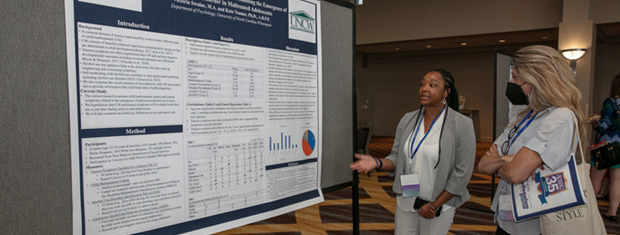




The APSAC Advisor is a peer reviewed quarterly news journal for professionals in the field of child abuse and neglect.
The APSAC Advisor provides succinct, data-based, practice-oriented articles that keep interdisciplinary professionals
informed of the latest developments in policy and practice the field of child maltreatment. It is designed to highlight
best practices in the field and publish original articles and current information about child maltreatment for professionals
from a variety of backgrounds including medicine, law, law enforcement, social work, child protective services, psychology,
public health and prevention in the U.S.
 If you wish to learn more about submitting an article to the Advisor, please click here.
If you wish to learn more about submitting an article to the Advisor, please click here.
This library contains Advisor issues dating back to the first issue in 1988. The most recent issue appears at the top.
Scroll down to select past issues by year and issue number. Once a publication appears in the box, you
can use the Enlarge button to open the document in a new window or tab (depending on how your browser is set up).
This will allow you to view the document with larger print.
To print a document, first use the Enlarge button to open the document in a new window or tab. Then use your browser's Print command.
To return here from a new tab, close the tab. To return from a new window, click your browser's Back button.
In the listing below, click on a year and issue number to see the articles in that publication.
1991 Number 1
Surviving in the Courtroom: Ten Rules of Testifying as an Expert Witness
It scares both parties, but for different reasons. When the 'expert witness' takes the stand in a criminal trial both the witness and the prosecutor generally panic a little. And for good reason.
Identifying Munchausen Syndrome by Proxy
Munchausen Syndrome by Proxy (MSP) is a form of child abuse in which the perpetrator, who is almost always the mother, causes her child to come under intense and prolonged medical scrutiny as a result of her falsification of history, covert alteration of laboratory specimens, or covert creation of unusual physical findings which create the appearance of illness in the child.
The Shaken Baby Syndrome (SBS) is a form of child abuse almost exclusively affecting children under the age of three years, with the majority of victims under 18 months of age.
Parental Stress Responses to Sexual Abuse and Ritualistic Abuse of Children in Day Care Centers
The sexual abuse of a child constitutes a major crisis for child victims and their parents. It is a generally-held belief that sexually abused children incorporate their parents' reactions to the abuse. Friedrich and Reams (1987) suggest that the symptoms seen in sexually abused children reflect not only the trauma they have experienced directly, but also their family environment, the amount of support the child feels, and the level of disruption that follows the disclosure of abuse.
Child Molesters and the Sex of Their Victims
The division of child molesters into subgroups on the basis of the sex of their victims was one of the earliest taxonomic distinctions to be examined empirically.
The purpose of Journal Highlights is to alert readers to current literature on child abuse. Selected articles from journals representing the variety of disciplines reflected in APSAC s membership are presented in the form of an annotated bibliography.
APSAC Advisor 4(1) - Full Issue